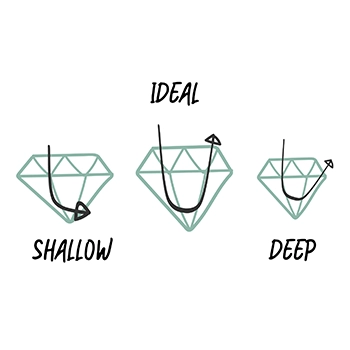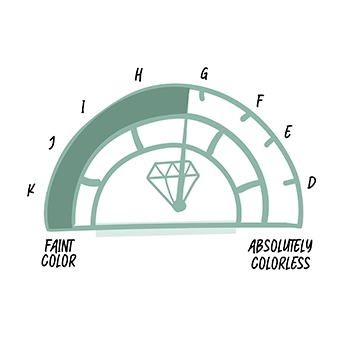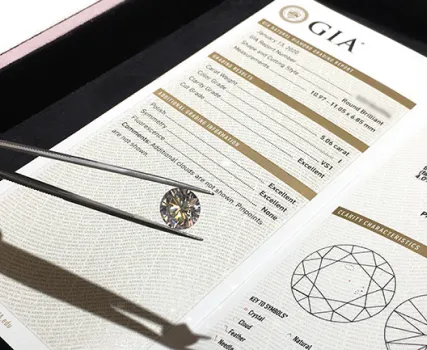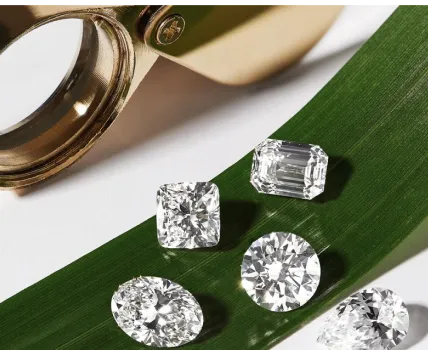friendly diamonds
USD
- Engagement RingsEngagement Rings
Create your own
pre-designed engagement rings
Ready to Ship Engagement Rings
Shop by style
Shop by metal
- Back
The 4 Cs of diamonds are a diamond grading system created by GIA to guide you in assessing the quality of a diamond before buying it. The 4Cs of diamonds grading report include the diamond's color, clarity, cut, and carat weight. The 4 Cs of diamond certificate is the most reliable way to verify and authenticate your gemstone when buying a diamond for engagement rings and other jewelry.

Many believe that a diamond cut grade refers to a diamond shape. This is not true. A diamond cut refers to the way a diamond's facets are cut for it to interact with light. Diamonds can sparkle intensely and transmit light. How the diamond is cut will affect the stone's brilliance, fire, and scintillation. An expert artisan must cut a diamond to its exact proportions and symmetry to have an excellent light return before polishing the stone.

A diamond carat weight refers to the weight of a diamond. A diamond is weighed by metric carats. One metric carat equals 200 milligrams. A diamond carat is further subdivided into 100 points called cents to obtain a precise measurement up to the hundredth decimal place. Since bigger diamonds are rarer and more desirable, diamonds with a higher carat weight are costlier.

The color of a diamond is assessed on the absence of color. High-quality diamonds have no color hue making them colorless diamonds of more value. Diamonds are color graded from D to Z. This color grading system evaluates the extent of the diamond's colorlessness. Gemologists place the diamonds in controlled lighting to determine their color grades. The color differences can sometimes be subtle, but these differences affect the diamond's price and quality.

The diamond creation process can lead to various internal attributes called inclusions, and external attributes called blemishes. The absence of these blemishes and inclusions denotes the diamond's clarity grade. Gemologists must evaluate the clarity of the diamond by assessing its blemishes and inclusions to know how they shall affect the diamond's overall appearance. A diamond's clarity grade has six categories that are further divided and range from Included (I1, I2, and I3) to Flawless (FL).
While the 4 Cs of diamonds are important when grading a diamond, the Cs of certificate and conscience are also equally important.

It is imperative to obtain a diamond certificate from your online jeweler when purchasing a diamond. Your diamond certification is a diamond grading report based on the 4Cs of diamonds. Independent diamond grading institutions like GIA, IGI , and GCAL provide the certification to authenticate the quality of your stone.

Conscience is about making an ethical and sustainable choice when shopping for diamonds. The diamond mining industry, infamous for its unethical practices, poses a big risk to the environment at large. Lab diamonds are part of a responsible diamond supply chain that guarantees a smaller carbon footprint is left on the planet, making it a conscientious buy.